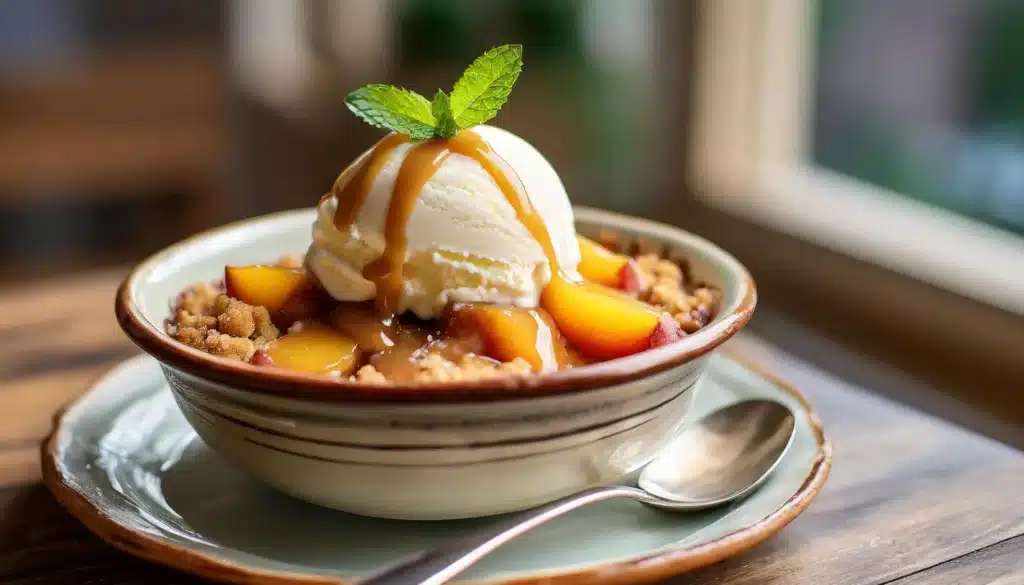
Introduction to Baking Cobblers
Cobblers, a delightful staple in many households, especially during peak fruit seasons, bring comfort and warmth to the table. These simple yet scrumptious desserts involve a layer of fruit, often spiced and sweetened, topped with a biscuit, dough, or cake-like crust. The charm of a cobbler lies not just in its rustic appeal but also in its adaptability to a variety of fruits and occasions.
However, for both novice and experienced bakers, one recurring question remains: How do I know when my cobbler is done? The answer to this isn’t always straightforward since it depends on factors like the type of fruit used, the depth of the baking dish, and personal taste preferences regarding crust texture and fruit consistency.
In this article, we’ll dive deep into various methods and signs that help determine whether your cobbler is perfectly baked. Ensuring your dessert is neither underbaked with a soggy middle nor overbaked and dry can be the difference between a good dessert and a great one. By mastering these techniques, you can consistently achieve a delightful cobbler that’s sure to impress.
Key Indicators of Doneness
Understanding when your cobbler is ready to come out of the oven is crucial for its final texture and taste. Here are the top indicators:
- Visual Cues
- Color: The crust should be golden brown, indicating it has cooked thoroughly and the sugars in the dough have caramelized beautifully.
- Bubbling: Look for the filling to bubble vigorously, not just at the edges, but throughout the center of the dish. This bubbling shows that the filling has reached a boiling point, which is necessary for properly cooking the fruit and thickening the juices.
- Texture and Consistency Tests
- Crust Firmness: Tap the crust lightly; it should feel firm and not doughy. A fully cooked crust will have a certain crispness on the top layer while remaining slightly tender underneath.
- Fruit Test: Insert a knife or a fork into the fruit layer; it should slide through easily without resistance, indicating the fruit is tender and cooked.
- Use of a Thermometer
- The most foolproof method to check if your cobbler is done is by using a thermometer. Insert a probe thermometer into the center of the cobbler; it should read around 200 degrees Fahrenheit (93 degrees Celsius). This ensures that the internal temperature is high enough to have cooked the fruit thoroughly and activated the thickening agents in the filling.
By observing these indicators, you can be confident that your cobbler is perfectly baked. For more baking tips and guidelines, explore Southern Living’s Tips on Making the Perfect Peach Cobbler, which provides valuable insights into choosing the right fruits and achieving the ideal bake.
Common Mistakes to Avoid
Ensuring a perfect cobbler involves more than just following a recipe; it requires attention to detail and avoiding common pitfalls. Here are the key mistakes to watch out for:
- Selection of Fruits:
- Always choose ripe, seasonal fruits for the best flavor and texture. Unripe fruit will not soften properly and can result in a tart or overly firm filling.
- Baking Time and Temperature:
- Avoid underbaking, which can leave you with a soggy crust and undercooked fruit. Conversely, overbaking might dry out the crust and the fruit, making the dessert tough and chewy.
- Handling of the Crust:
- Ensure the crust is neither too thick nor too thin. A thick crust might remain uncooked in the center, while a thin crust can become overly crispy or burnt.
Adhering to these guidelines will help you avoid common errors that can ruin a good cobbler. For additional baking techniques and tips about Chicken Cobbler, make sure to check out our guide on how to Reheat Chicken Cobbler in the Oven Perfectly.
Advanced Tips for Perfect Cobblers

Once you have mastered the basics, these advanced tips will help you elevate your cobbler:
- Letting the Cobbler Rest:
- Allow the cobbler to rest for at least 15 to 20 minutes after baking. This waiting period helps the fruit filling thicken and set, improving the consistency when served.
- Serving Suggestions:
- Serve your cobbler with a scoop of vanilla ice cream or a dollop of whipped cream to complement the warm, fruity flavors.
- Consider adding a sprig of mint or a dash of cinnamon to enhance the aroma and taste.
- Adjustments for Different Types of Fruits:
- Thicker-skinned fruits or berries may require a longer baking time or a bit more sugar to balance acidity and sweetness.
- Soft fruits like peaches and plums might benefit from a shorter cooking time to prevent disintegration.
Understanding these nuances ensures that your cobbler is not just good, but great. Utilizing a probe thermometer as discussed by The Kitchn can also take the guesswork out of baking, ensuring perfect results every time.
FAQs
Addressing common queries can further clarify the cobbler-making process:
- Can I use frozen fruits for making cobblers?
- Yes, frozen fruits can be used, but they should be thawed and drained to prevent excess moisture from making the crust soggy.
- How long should I let my cobbler cool before serving?
- Letting it cool for about 20 minutes allows the filling to thicken and the flavors to meld together better.
- What are the differences between a cobbler, crisp, and crumble?
- While all three desserts involve baked fruit, a cobbler has a biscuit or cake-like topping, whereas crisps and crumbles have a streusel-like topping made of flour, butter, and sugar, often with oats or nuts.
- How can I tell if my cobbler is underbaked without a thermometer?
- Look for a fully browned crust and listen for the sound of bubbling in the center, not just at the edges.

Conclusion and Recap
In conclusion, knowing when your cobbler is done is crucial to achieving the perfect dessert. By following the tips outlined in this article, from selecting the right fruits to mastering the baking signs and avoiding common mistakes, you can ensure your cobbler is delightful every time. Remember to experiment with different fruits and toppings to find your favorite combinations and refine your baking skills further.
Through understanding and attention to detail, you can transform this simple dessert into a show-stopping finale for any meal. Enjoy the process and the delicious outcomes of your baking adventures!
This comprehensive guide should serve as a valuable resource for anyone looking to master the art of making the perfect cobbler. Each section has been carefully crafted to provide insightful and practical advice, ensuring a delectable result with every bake.
